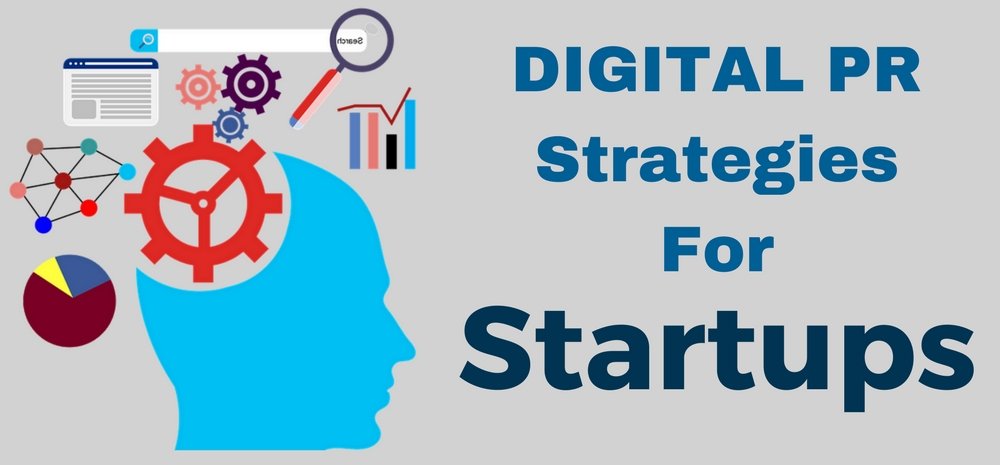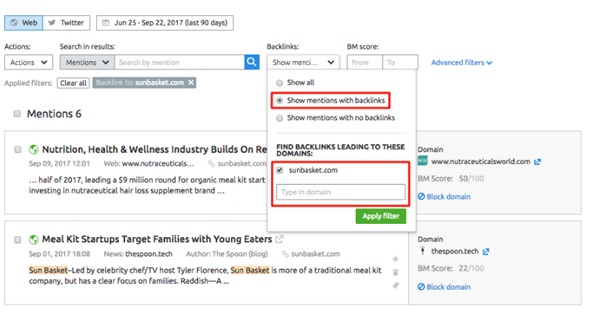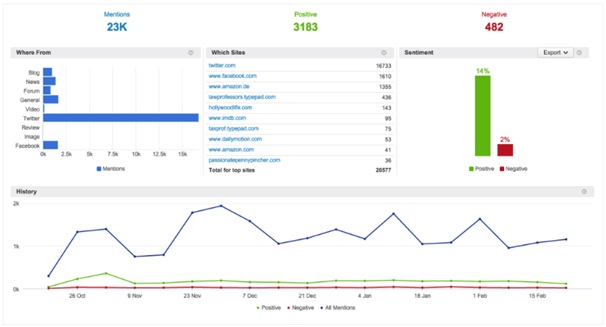How Can Startups Build An Actionable Digital PR Plan?
Digital PR makes the PR channel accessible to everyone, big players and small players.

PR has always been considered to be a long-term and costly marketing channel. In the days of traditional marketing, PR was a game for the big players, while smaller businesses were hesitant over investing in such an “untrustworthy” activity, thus, they almost completely dropped any efforts to create an effective PR strategy. However, the beginning of the digital age has also paved the way for the renewed opportunities for PR, for it has become more accessible. Yet, many startups are still betting on other channels and leaving PR behind. However, with the right tools and a smart strategy, startups can vastly benefit from digital PR.
What are the most important outcomes that a startup expects from digital marketing? Visibility, brand awareness, buzz, traffic, conversions, and the list goes on. Everything has to happen quickly and require as few resources as possible. Channels, like Paid Advertising or Content Marketing, seem really straightforward, measurable, and “proven”. With PPC you can get your instant visibility as long as you keep the budget going, while content marketing provides you with a more solid foundation for your marketing efforts – it is a more steady and reliable process. However, if only there was a way to combine PPC’s instantness and content marketing’s well-founded nature, digital PR could be the solution. The latter is often criticized for lacking an appropriate measurement system, but with the right instruments, you can forego this obstacle and make sure you are leveraging the digital PR channel to your business’s advantage.
Contents
Why Are Tools Essential for Your PR Strategy?
In the digital space, a lot that can be done manually. However, the amount of time and effort any digital activity requires is just overwhelming. Here are a couple of stats to consider:
- 71% of SMB owners perform digital marketing on their own – industry experts can be quite costly.
- Only 50% of small businesses use 2 or fewer software platforms or applications.
Thus, what we have in the end is plenty of striving businesses who need to get their product/service out there, cannot hire growth hacking specialists and simply follow their instincts or, in the best case scenario, read marketing blogs and follow industry trends. Although many entrepreneurs have the right grasp to find their way around to learn all the basics, they also have to think about time efficiency and leave enough space for other non-marketing business development activities. This is when tools enter the stage and save the day. With the right strategy and the right tools, any startup can build an efficient and measurable digital PR plan.
But what should your digital PR plan consist of? There are three layers to an efficient PR strategy:
- You have to determine your competitors and uncover their most valuable referral sites
- Based on data, you have to prioritize your digital PR channels
- Finally, you have to actually reach out to the websites you want mentions from
And below we will discuss how you should tackle each layer and which instruments will spare you some time and resources.
Digital PR Plan And Tools To Consider
The very end goal for your digital PR strategy is to be mentioned and not by simply anyone. You want authoritative and trustworthy sources to talk about your business. So here is what you should do:
Determine Your Competition & Reveal Their Referral Traffic Sources
It all starts with competition analysis. There is no need to reinvent the wheel – your successful competitors have already been where you are standing now. And tracing back where their success came from is the very first step towards an actionable PR plan. Thus, you have to identify who mentions your competitors and which websites bring in the most traffic to their websites. If you spot that your rivals get consistently mentioned on a particular site, that’s probably where you have to be present, too. These sites are already writing about the kind of business that you do. Furthermore, it is smart to target your competitors’ audience where it already goes to get some information on your kind of business.

Thus, the very first thing you should do is to identify who your most successful competitors are. While you might already be aware of the “sharks” of the industry you are in, there are many names you might be missing.
Tools That Can Help You Identify Your Biggest Competitors
- SEMrush – an all-encompassing SEO and digital marketing suite that reveals almost every aspect of competitor’s digital presence – traffic insights, advertising research, keyword strategy, link-building strategy and so on
- SimilarWeb – gathers traffic insights on any website – its ranks within a country, global rank, category ranks; displays the website’s traffic and where it comes from; gives suggestions on competitors to watch out for
- Searchmetrics – a tool for monitoring competitors’ search rankings – positions, traffic, website visibility and authority.
Once you know who your competitors are, you can see what kind of audience they are targeting. Spot similar trends among your biggest competitors: are they actively targeting millennials? then, be appealing to them. Are they engaging an industry-specific audience? Get to that segment with a relevant content strategy. And so on.
The next step is to reach out to the sources that mention your competitors and make sure that there’s a mention of you, too.
Put Your Time and Efforts in the Leading Channels
Startups often know that in order to survive and not to outspend their scarce resources they have to prioritize. You cannot tackle every site your competitors get mentioned on. Your time and budget won’t allow it, and that’s a good thing, for you will be “forced” to be efficient and result-oriented. Thus, only by targeting the best-performing PR channels, will you be able to avoid the “trap” of inept resource allocation.
Your entire strategy should revolve around blogs and media that are authoritative and trusted. With mentions, quality prevails over quantity.
While some media sites like Forbes and TechCrunch are known to be sources of “good” mentions, others should undergo some close scrutiny. So here are some steps you should take to distinguish the best sources of referral traffic for your business:

- Make sure that your potential mentions will come with a backlink. Direct mentions bring in more traffic and authority to your website, and, thus, affect your position in the search results.
- Pay attention to the titles of mentions: sites that can reveal your brand name in the heading should have some priority. Especially, if you are looking for brand awareness.
- Dismiss mentions that are not aligned with your PR goals or that come from a domain with a low trust score.
Tools That Help You Track Mentions & Backlinks
- Google Alerts – a tool that sends out reports any time your competitor gets mentioned, either with a backlink or as a simple mention
- SEMrush – the toolkit has a Brand Monitoring Tool and various backlink and link-building tools that both monitor competitor mentions and backlinks (with a domain score assigned to each of them) and give suggestions on your own link-building strategy
- Monitor Backlinks – the tool is specifically designed to monitor competitors’ backlinks – the reports are sent out to your inbox, nofollow/dofollow links are distinguished, low/high domain score is assigned to each link
- Open Site Explorer – allows you to find out who’s linking to your competitors
- Majestic SEO – provides you with a full links-related picture of your competitors (the data is exportable)
- Ontolo – a tool for backlinks with emphasis on content marketing
- Mention – real-time alerts on any mentions of your competition (linking back to them or simply talking about their product/services).
Stand Out to Reach Out
- Once you’ve discovered the relevant referral sites for your business, make sure that your business is offering something appealing to your target audience. Being distinctive will make your brand look attractive. Only then can you apply the following tactics to approach the blog or media site you want to be mentioned on.
- Build a compelling content strategy: align your brand image and ideas with your target audience’s perceptions of your kind of business. By satisfying your target audience’s needs, you will automatically be more attractive to the blog or media you are about to approach, for it is tackling a similar audience segment as you are.
- Promote the content of the sources you are focusing your PR efforts on – via backlinks from your own blog, your Social Media channels, your newsletter and so on.
- Don’t underestimate the power of a good old direct email. Write to the owner of the media or blog site you want to approach for mentions, be personal and let them know you are well-aware of the hard work they do but, at the same time, be business-like and offer them something irresistible.
Reach Out in Real-Time
With digital PR outreach can happen right here and right now, and the results are often close at hand. PR efforts should not be limited to approaching blogs and media outlets; in addition, they should also provide a platform to engage existing and future customers who could already be potentially attracted to your products/services.
The greatest example of that comes with Social Media. SM can spare you from uncertainty and costliness of paid advertising campaigns, where you have to reach out to your audience with an attractive offer with no guarantees of decent performance and a definite guarantee of expenditures.
Social Networks help businesses engage with their customer base and talk to them in real time. They also allow you to quickly respond to negative feedback before your company’s public image gets spotted. And that publicity, even with conflict resolution, is often a good thing – by resolving an issue instead of simply keeping the customer constantly satisfied, businesses increase their customer loyalty by 21 percent.
Moreover, monitoring your competitors’ SM accounts can also be considered a PR effort, for your business can largely benefit from the transparency of company-customer relationship within Social Media channels. You can literally sway your competitors’ dissatisfied customers to your business by offering something your competitors were unwilling to do: a better customer service, a customized design for the product and so on.
Additionally, Social Media is a great mention-tracking platform. Identify your competitors’ top mentioners within SM channels and try to get noticed by them, too. Building relationships with new and maintaining good terms with existing brand advocates is a big part of every digital PR strategy.

Tools for Competitors’ Social Media Monitoring
- Brandwatch – a tool, specifically built for brand monitoring, analyzes competitor SM profiles in terms of sentiment, topics and location.
- SEMrush – the tool covers the biggest Social Media Networks and cross-analyzes competitor profiles with your SM channels or other competitor accounts in terms of engagement, activity and audience.
- Marketing Grader – monitors your competitors’ entire social activity and assigns each competitor an overall score for their SM efforts
- OCTOBOARD – a data visualization app that builds real-time dashboards for Social Media Monitoring (you can combine your own data with that of your competition).
Final Touches
Regarding digital PR, the advantages can considerably surpass the costs and enforcement time. Thus, as a startup, it is wise to invest in instruments that help you set the stage for a thorough market research, competition analysis and performance tracking of your or rivals’ previous PR campaigns. Only then can you create a fruitful and beneficial PR strategy. So make sure that your business is capitalizing upon data-driven and well-designed PR decisions by leveraging the right tools that encompass data on all significant lines of your PR strategy.

Some really cool tools you have shared here. Have used Open Site Explorer and SEM Rush, they are really good